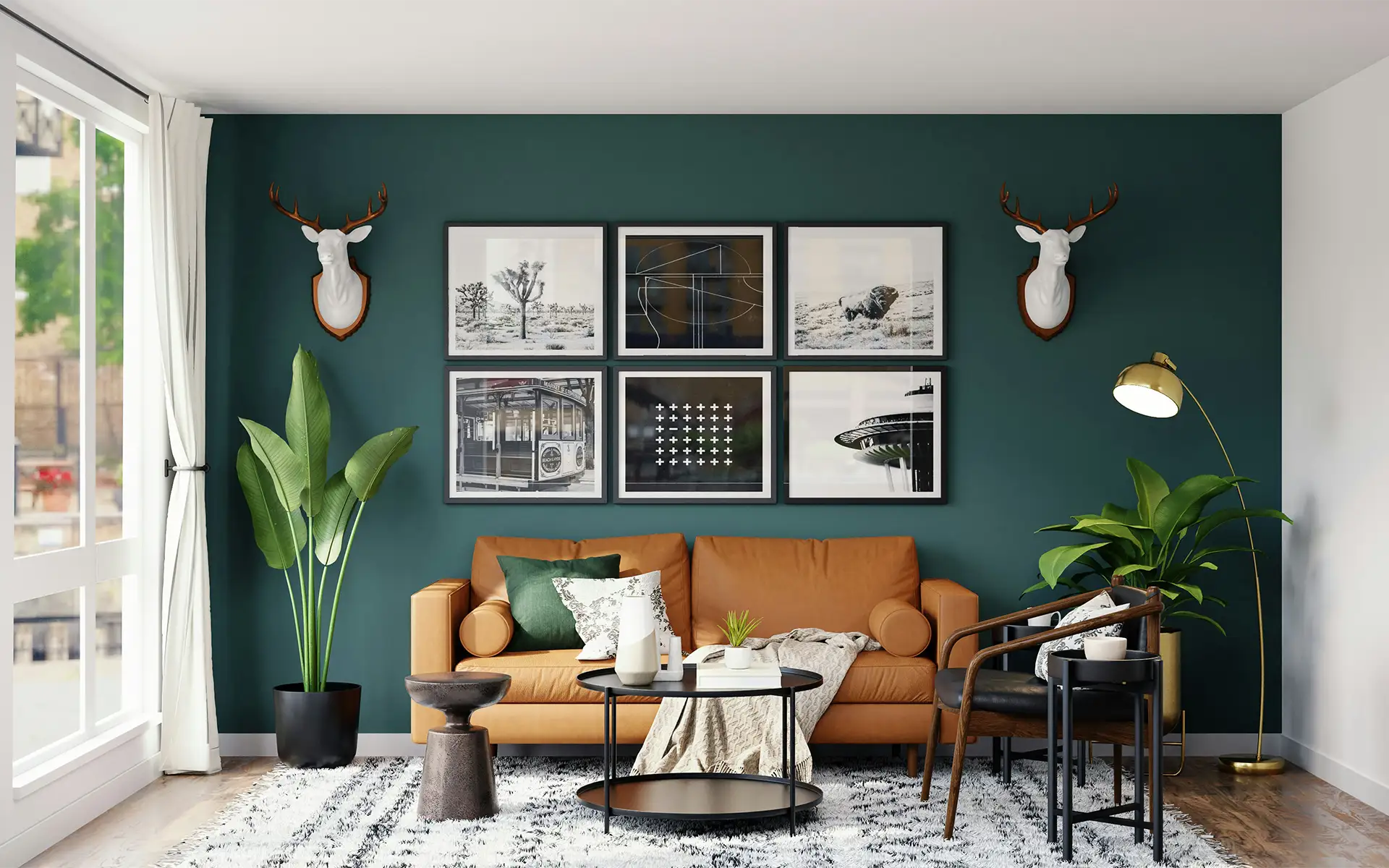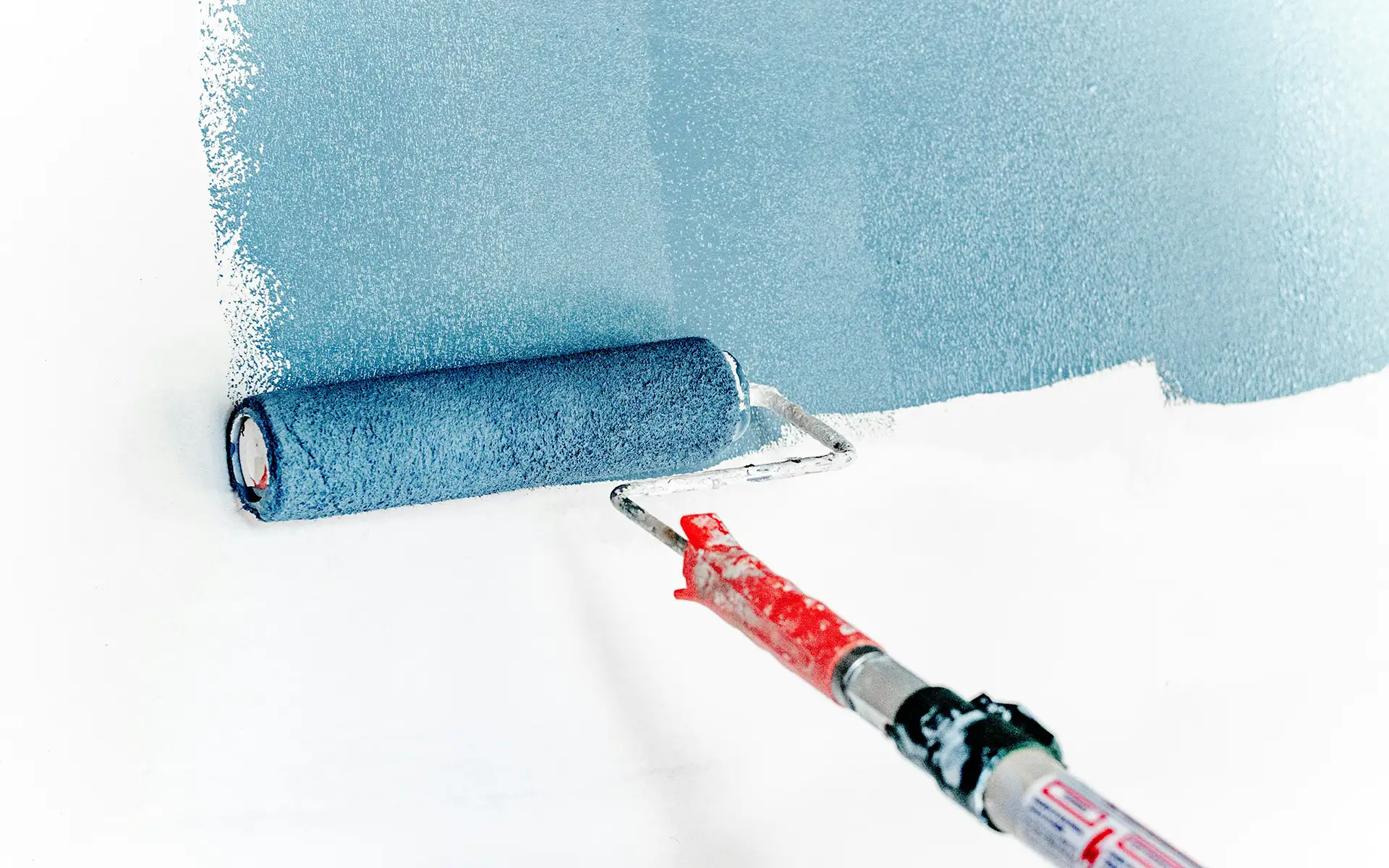
A fresh coat of paint is one of the easiest ways to refresh a space. A new color can instantly transform a room, setting the tone for the space and creating a baseline for other decorative changes to come. However, choosing the right color is only half the battle – how that color looks once applied depends on the finish or level of paint sheen selected.
Interior paint sheen levels affect everything from how light bounces around a room to how well the surface holds up to cleaning and wear. In this post, we explain the different paint sheen options to help you decide which is best for each area of your home or commercial space, ensuring a beautiful finish.
What Are Paint Sheen Levels?
A paint sheen level refers to the light reflectivity in a paint finish, e.g., how shiny or matte the paint appears once it dries. But sheen isn’t just about looks. The sheen levels of paint also play a key role in how durable a painted surface is and how easy it is to clean, making it an important factor to consider when choosing paint for different areas of your home or business.
How Light Reflectance Defines Sheen
Ever notice how some paints reflect more light than others? The glossier the finish, the more light it reflects. This phenomenon occurs because a flat or matte paint finish will absorb light, creating a soft and smooth finish. On the other end of the sheen spectrum, a high gloss finish reflects a lot of light, making walls appear shiny, which lends spaces a brighter, more dynamic feel.
Why Sheen Matters for Aesthetics and Durability
Beyond visual appeal, paint sheen levels also affect how well a surface stands up to the wear and tear of daily activity. Paint durability is paramount in homes with kids, pets, or high-traffic zones in commercial environments. The general rule of thumb is that the higher the sheen, the more durable and washable the finish. This is because glossy sheen levels of paint contain more resins or binders and fewer pigments, which makes the surface harder and more resistant to moisture, stains, and scuffs.
Sheen Levels Overview
So, what are the different sheen levels of paint? We can classify them into five categories, each providing a different aesthetic and level of durability. Here are the different paint sheen levels from least to most durable, including how they stack up in terms of wear and upkeep.
Flat/Matte
This level of paint sheen offers little to no gloss – lending surfaces a soft, velvety look. These finishes are excellent at hiding surface imperfections, but they’re the least durable and can be difficult to clean without removing paint in the process.
Eggshell
These finishes are slightly more durable than flat or matte paints, offering just a hint of sheen. Eggshell finishes are a good compromise between aesthetics and cleanability, as they can handle occasional wiping.
Satin
A step up in both sheen and strength, a satin paint sheen level is a reliable choice for busy households. They hold up well to regular cleaning and offer better moisture resistance than lower-sheen paints.
Semi-Gloss
Semi-gloss paint sheen levels provide a noticeable shine, excellent durability, and moisture resistance, which holds up well to frequent cleaning and scrubbing.
Gloss/High-Gloss
The most durable option, high-gloss paints form a hard, enamel-like shell that resists stains, smudges, and scratches, making these levels of paint sheen ideal for surfaces requiring frequent cleaning. However, because gloss and high-gloss paints reflect a lot of light, they can emphasize surface imperfections, so careful prep work is essential.
Factors to Consider When Choosing a Paint Sheen

Choosing the right sheen isn’t just about looks – it’s also about ensuring painted surfaces can withstand the demands of a space. High-use areas need tougher, shinier finishes, while low-traffic or decorative spaces can get away with softer, subtler sheens. It’s also important to balance sheen with color, as glossier finishes intensify light reflection and color vibrancy, and matte finishes tone down bold hues and create a more muted effect.
Another consideration during paint sheen level selection is the area’s lighting – is it natural or artificial? Lighting can significantly impact the way the paint sheen looks on your walls. The light’s type, direction, and intensity can enhance or soften the paint’s appearance. Thus, the higher paint sheen levels (satin, semi-gloss, and gloss) will appear even shinier in spaces with lots of natural light, while matte finishes will look softer and more consistent.
The sheen perception will also vary according to the bulbs used for lighting. For example, warm LED and incandescent bulbs cast a yellowish glow, softening higher sheens to make them look warmer and cozier. In contrast, cool white or daylight LED bulbs are brighter and crisper, enhancing the sheen to produce a more reflective appearance. The lighting’s direction matters, too. Lighting in a space that hits the walls at an angle (e.g., directional vs. overhead) will exaggerate reflections, making the sheen more noticeable.
Types of Paint Sheens and Their Best Uses
Although the right paint color can transform a room, selecting the right sheen for the space is imperative, both aesthetically and practically. Let’s review where each paint sheen level works best according to an area’s function within a residential or commercial setting.
Flat / Matte
Since flat and matte paints offer little to no shine, they give surfaces a smooth, velvety appearance. These paint sheen levels are also great for hiding imperfections like drywall patches or uneven textures. However, flat/matte sheens are more challenging to clean, making them best-suited for low-traffic areas, such as ceilings, adult bedrooms, home offices, or formal areas with minimal traffic in commercial spaces.
Eggshell
This soft, low-sheen paint is just a step above flats and mattes, offering a touch of light reflection without appearing too glossy. This makes eggshell paint sheen levels more durable and easier to clean than matte/flat. This level of sheen works well in rooms with moderate activity, like living rooms, dining rooms, and hallways in homes or conference rooms and reception spaces in businesses.
Satin
Satin paints have a smooth, pearl-like sheen that reflects more light while offering more durability. This finish boasts more durability and moisture resistance for easier cleaning, working well in areas with frequent use where occasional splashes may occur, e.g., kitchens, bathrooms, children’s rooms, laundry rooms, breakrooms, and other high-traffic areas.
Semi-Gloss
Semi-gloss paint offers a noticeable shine that is perfect for highlighting architectural details like trim and molding. But it’s not just about looks – this paint sheen level is also highly durable, resisting moisture, stains, and frequent scrubbing with ease. Thanks to its resilience and reflective finish, semi-gloss works well on high-contact surfaces like doors, baseboards, cabinets, and window frames.
Gloss / High-Gloss
Gloss and high-gloss finishes are the shiniest and most durable options. They create a smooth, reflective surface, almost like a lacquered effect, that resists stains and scratches. While they’re less common for large wall areas, these higher levels of paint sheen are perfect for statement pieces or frequently cleaned surfaces, e.g., cabinets, furniture, doors, decorative molding, and accent pieces.
Final Thoughts
As you can see, paint selection is about more than color – choosing the right level of sheen is critical to the outcome. From flat to high-gloss, each finish uniquely balances aesthetics, durability, and practicality. It’s also important to consider how the surface and space function, as well as lighting, when considering the appropriate paint sheen level. Whether refreshing a primary bedroom retreat or revamping an employee lounge/breakroom, the appropriate level of paint sheen will bring your vision to life beautifully and effectively.
Ready to transform your space with the perfect color and finish?
Contact us today for expert painting and decorating services that bring lasting beauty to every room.
Paint Sheen FAQs
What is the most popular paint sheen for interior walls?
Eggshell and satin are the most popular, offering a balance of durability and a soft, stylish finish.
Can I use flat paint in a bathroom?
It’s not recommended. Flat paint sheen levels lack moisture resistance and are hard to clean, making it a poor choice for humid spaces.
How does paint sheen affect color perception?
Higher sheens reflect more light, making colors appear brighter and more intense, while lower sheens soften and mute the color.
What sheen is best for hiding imperfections?
Flat or matte levels of sheen in paint minimize light reflection and help conceal surface flaws.
Does higher sheen mean more durability?
Yes, the higher the sheen, the more durable and easier to clean the surface typically is.
